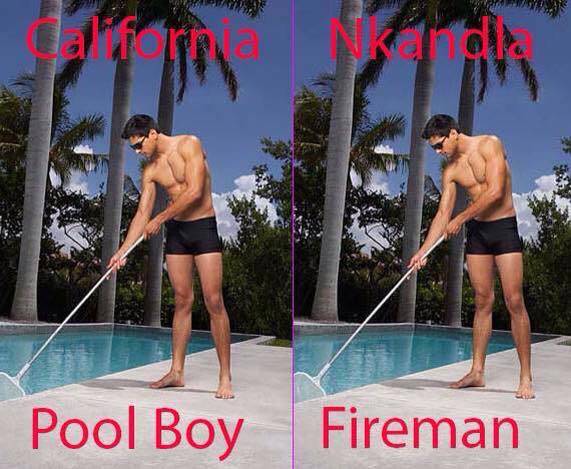
The “Hottest” Firepool Jokes Burning up the Internet Right Now!
It’s South Africa where humour is how we cope with stressful or frustrating situations, so of course the jokes have been flooding in since it was announced yesterday by the Police Minister that South African President Jacob Zuma will not need to pay back the money for the Nkandla upgrades. Some Jokes being shared about the […]

It’s South Africa where humour is how we cope with stressful or frustrating situations, so of course the jokes have been flooding in since it was announced yesterday by the Police Minister that South African President Jacob Zuma will not need to pay back the money for the Nkandla upgrades.
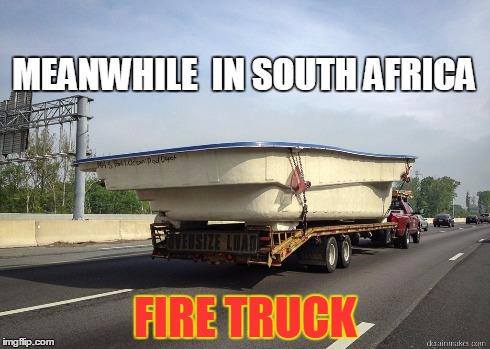
Some Jokes being shared about the Nkandla Report:
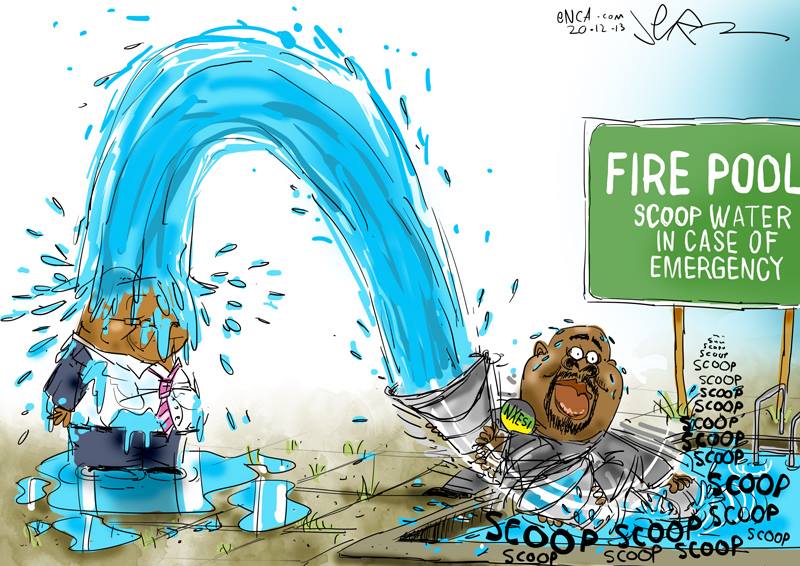
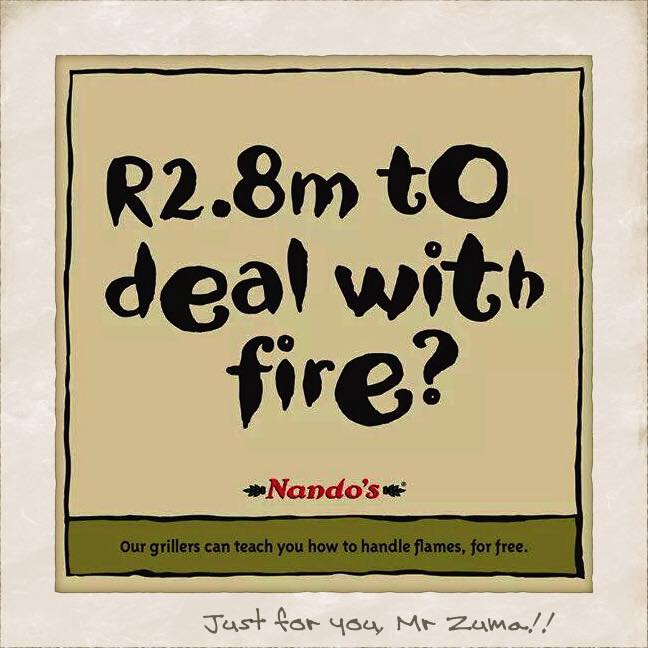
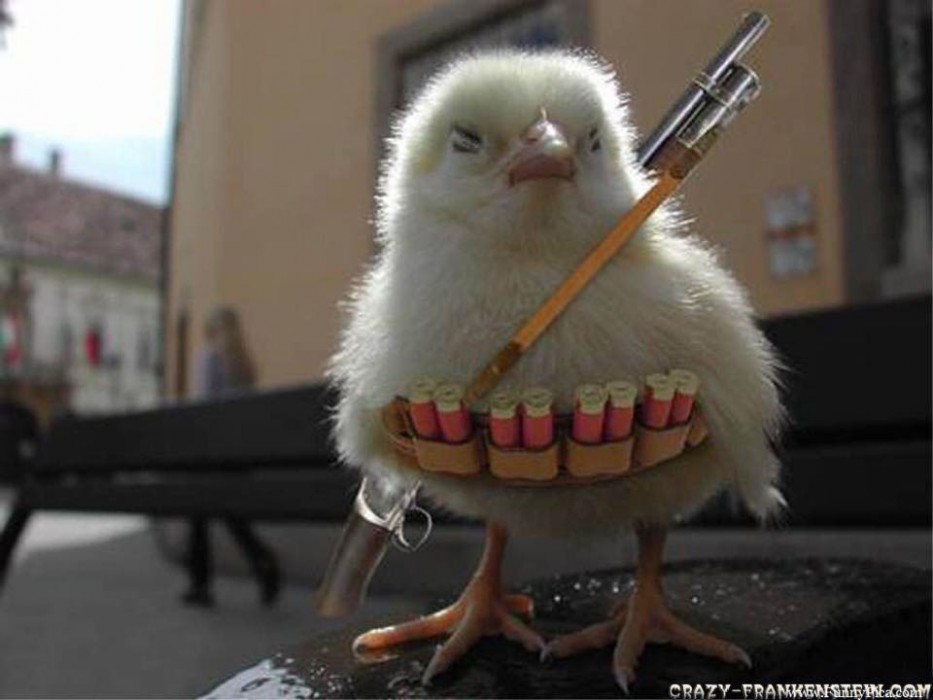
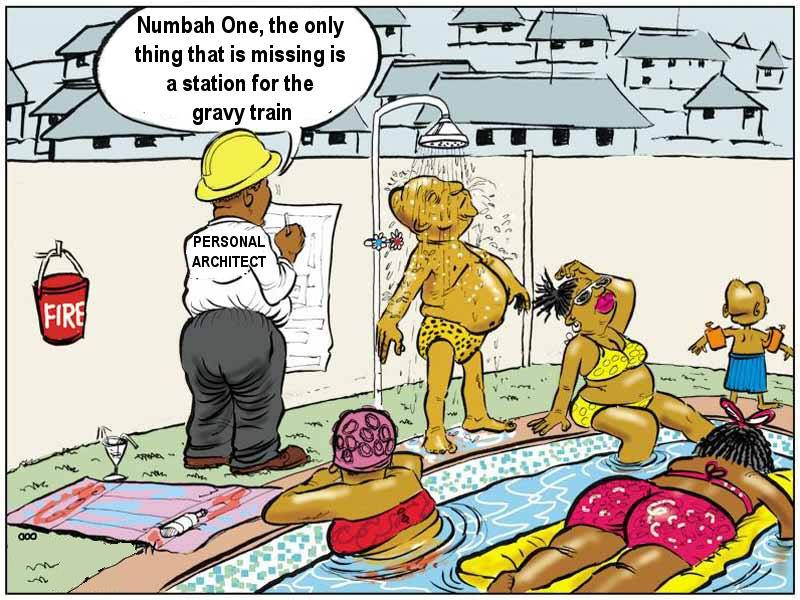


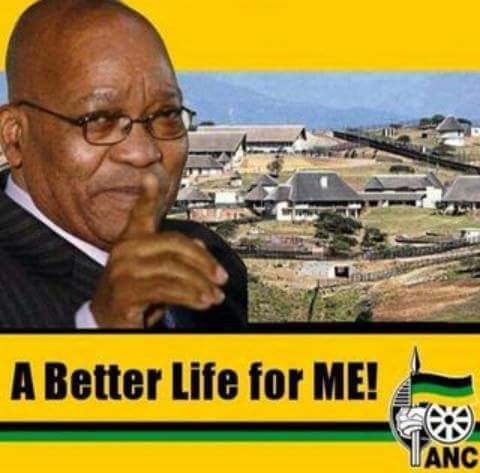
Wikipedia Entry!!!
A tongue-in-cheek article has also been added to Wikipedia about the “firepool” (otherwise known as a swimming pool!). Currently Wikipedia is asking for feedback on the article before they delete it, but in case you miss it, here’s the Wikipedia description:
“A Firepool is a holding tank or other storage source for chemically treated water to be used in firefighting. It can be a backup Water source or the chief firefighting water source. A secondary use of a firepool could be for recreational purposes.
“The most notable (and possibly only) firepool can be found at South African president Jacob Zuma’s Nkandla compound, built as an essential security item for the sum of R3.9m.”
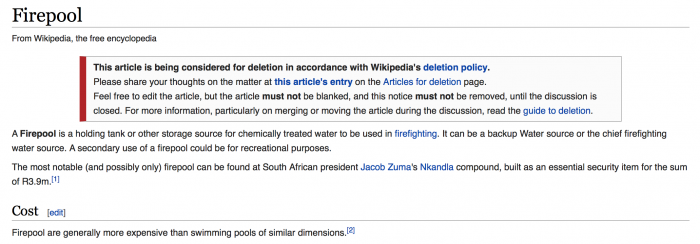
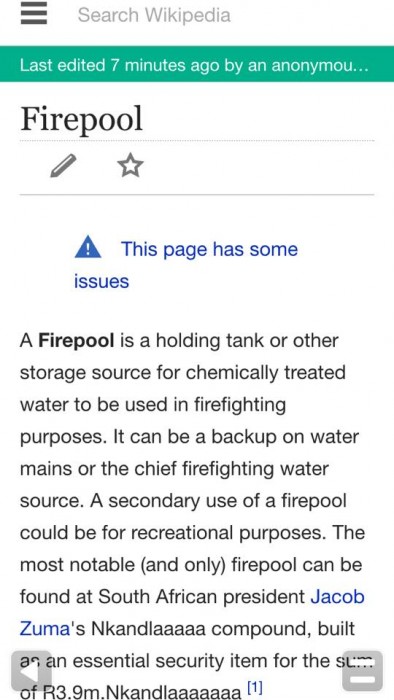
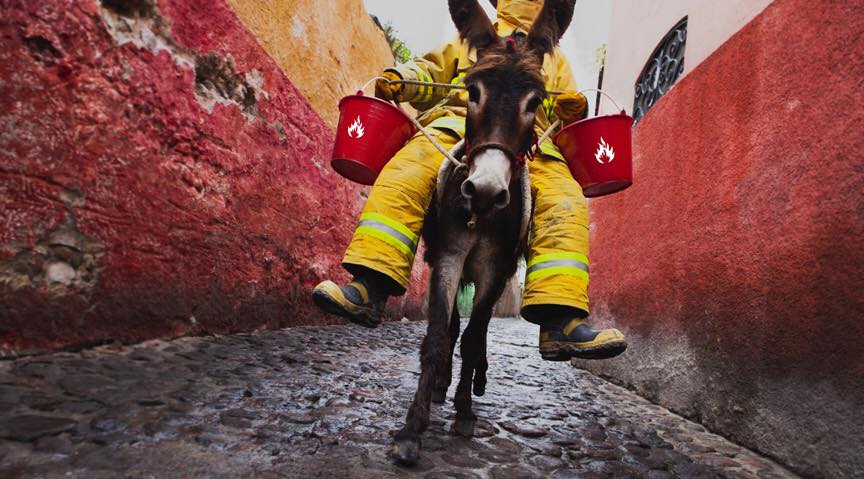

From John Dunkerley: “The best one I heard this year is that the reason the dams are not full is that the previous government made them too big.”
From Paul M comes a joke we can’t quite republish: “Nkandla: pronounced n-Kxxx-la. Mixture of SA languages meaning ‘there’s a xxx over there’.”
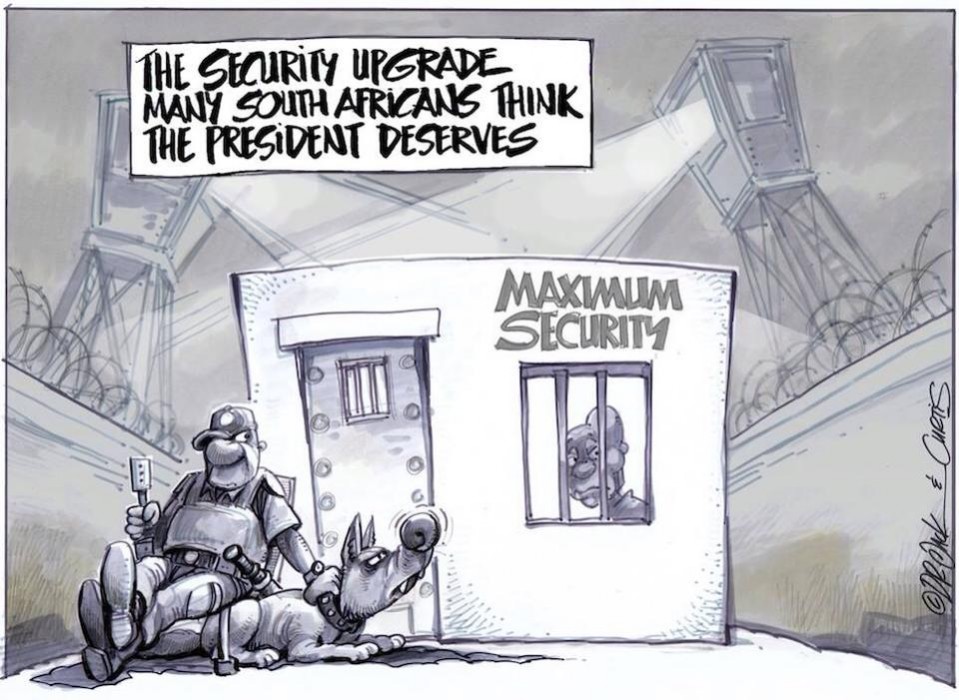
And there’s even a Firepool Video…
Submitted by Courtney Louise Ralph. According to 9mil Media, who uploaded the video in May last year, it shows “The Firepool – the latest in home fire protection – once a secret weapon of only government officials, but now – thanks to modern technology (and journalistic investigations) – access to the Firepool is now available to the general public. At a price, of course…”
On a more serious note, here is the Public Protector Thuli Madonsela’s response to the Police Minister’s Nkandla Report:
Subject: Public Protector responds to the Minister of Police’s report on Nkandla
The Public Protector, Adv. Thuli Madonsela, notes Minister of Police Nathi Nhleko’s report to Parliament on the security upgrades at President Jacob Zuma’s private residence in Nkandla, KwaZulu-Natal. She is of the view that Minister Nhleko gave the matter his best and that he applied his mind to the issues at hand.
The Public Protector believes the shortcomings of the Minister’s report are partly due to the fact that the Minister is a member of an executive, whose members, including the minister’s supervisor, are among the public functionaries found to have acted improperly in the report.
The shortcomings observed by the Public Protector include misstatements, inaccuracies, incomplete information, innuendos and false accusations in relation to her own investigation culminating in a report titled Secure in Comfort, issued on 19 March 2014.
1. Examples of misstatements, inaccuracies, incomplete information and innuendos
A claim is made in Minister Nhleko’s report, which incorrectly states that the Public Protector found that “no public funds was used to build the President’s house(s)” (sic). This could not be further from the truth. According to paragraph 10.10.1.1. of the Public Protector’s report: “President Zuma told Parliament that his family had built its own houses and the state had not built any for it or benefited them. This was not true. It is common cause that in the name of security, government built for the President and his family at his private residence a Visitor’s Centre …” This is important because the Visitor’s Centre itself is a house, a double story building.
In another instance, an impression is created in Minister Nhleko’s report that the Public Protector found that there was no need for a water source to help in the event a fire broke at the President’s residence. This is false. As can be gleaned from paragraph 10.3.2 of the Public Protector’s report: “Measures that should never have been implemented as they are neither provided for in the regulatory instruments, particularly the Cabinet Policy of 2003, the Minimum Physical Security Standards and the SAPS Security Evaluation Reports, nor reasonable, as the most cost effective to meet incidental security needs, include … a swimming pool …”
Minister Nhleko’s report further does not indicate the scope of his investigation and timeline. The relevance of these is to indicate what issues where included or excluded in his investigation.
2. Status of the Public Protector’s report
The Public Protector stands by her report. As far as the Public Protector understands the Constitution and the law, neither the Executive nor the Legislature can override the findings of any independent institution established under Chapter 9 of the Constitution, replacing such determinations with their won. This is why the Constitution states in Section 181(2) that “these institutions are independent and subject only to the Constitution and the law …” In any event, Minister Nhleko’s report does not attempt to review the Public Protector’s report. Instead, it makes random and sometimes adverse comments on isolated aspects of the report.
3. Security expertise
The Public Protector has further noted repeated uninformed statements that seek to suggest that she needed to have been a “security expert” in order to make findings on what constitutes security items and what doesn’t. Such a view cannot be possibly rational. Firstly, in deciding which items were security measures and which were not, the Public Protector relied on authorising instruments and decisions of authorised people and structures such as the security experts assigned responsibility in the relevant policies. The authorising instruments were the Cabinet Policy of 2003, the Minimum Physical Security Standards and the South African Police Service (SAPS) Security Evaluation Reports compiled by security experts. In addition, the very same experts prepared a list that itemised things that the owner had to pay for.
In any event, adjudicators need not be experts in the field of matters that are the subject to their scrutiny. For example, Judge Ian Farlam who presided over the Marikana Commission of Inquiry did not need to be an “expert” on policing in order to discharge his duties in that regard. This is because adjudicators such as the Judges and the Public Protector, among others, make determinations on the basis of the evidence before them, coupled with what the law says versus what happened.
4. What ought to have happened
In terms of paragraph 11.1.1. of the Public Protector’s report, the President was to “Take steps, with the assistance of the National Treasury and the SAPS [South African Police Service], to determine the reasonable cost of the measures implemented by the DPW [Department of Public Works] at his private residence that do not relate to security, and which include Visitors’ Centre, the amphitheater, the cattle kraal and chicken run, the swimming pool”. The President was also to “pay a reasonable percentage of the cost of the measures as determined with the assistance of the National Treasury, also considering the DPW apportionment document”. From the above extracts, it is clear as to what the role of the SAPS was in relation to the implementation of the remedial action the Public Protector took in terms of Section 182(1) (c) of the Constitution and Section 9 of the Public Protector Act 23 of 1994.
5. Way forward
The Public Protector, as the only oversight authority that is legally competent to advise the President on matters of Executive Ethics, will write to the President to point out the limitations in the Minister of Police’s report, with a view to ensuring that the President is placed in a position to make an informed decision not based on withheld or distorted information.
Lastly, the Public Protector would like to emphasise the point that she did not make the rules that she relied upon in investigating the matter in question, the government did. Furthermore, Minister Nhleko is a member of the executive, who serves at the behest of the President. This is why the late former President Nelson Mandela, in making the point that executive excesses and conduct must be subjected to the scrutiny of independent institutions that operated outside the executive, said the following:
“Even the most benevolent of governments are made up of people with all the propensities for human failings. The rule of law as we understand it consists in the set of conventions and arrangements that ensure that it is not left to the whims of individual rulers to decide on what is good for the populace. The administrative conduct of government and authorities are subject to scrutiny of independent organs. This is an essential element of good governance that we have sought to have built into our new constitutional order. An essential part of that constitutional architecture is those state institutions supporting constitutional democracy. Amongst those are the Public Protector, the Human Rights Commission, the Auditor General, the Independent Electoral Commission, the Commission on Gender Equality, the Constitutional Court and others…”